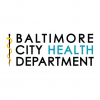Health Commissioner Declares Code Blue in Baltimore in Advance of Anticipated Winter Storm
Thursday Jan 21st, 2016
FOR IMMEDIATE RELEASE
BALTIMORE, MD (January 21, 2016)– With the region’s first major winter storm expected to begin Friday afternoon, Baltimore City Health Commissioner Dr. Leana Wen today issued a Code Blue declaration for Baltimore City beginning Friday, January 22nd through Sunday, January 23rd.
“In anticipation of a significant snow storm expected to hit the Baltimore region that will accompanied by heavy winds and cold temperatures, I am issuing a Code Blue for Baltimore City, beginning Friday afternoon,” said Baltimore City Health Commissioner Dr. Leana Wen. “Now is the time to refill your prescription medications; ensure your home has sufficient supplies, including an emergency kit; and to check in on your neighbors.”
The Health Commissioner may declare a Code Blue alert when temperatures, including wind chill, are expected to be 13˚F or below or when other conditions are severe enough to present a substantial threat to the life or health of vulnerable Baltimore citizens.
Code Blue indicates an increased risk for cold injuries or even death for those exposed to low temperatures. Once a Code Blue declaration is made, public messaging activities are undertaken to encourage safety when outdoors and response partners work to ensure those in need find sheltering. During the Code Blue season, which began November 16, 2015 and lasts until March 15, 2016, City agencies work together to:
- Distribute meals to at-risk senior citizens;
- Provide home weatherization services;
- Help individuals apply for emergency assistance; and
- Provide additional cold weather education and outreach efforts, as needed
Throughout the Code Blue season, The Mayor’s Office of Human Services’ Office of Homeless Services also works with city homeless shelter providers to extend shelter hours and to provide expanded bed capacity.
10 Winter Storm Preparedness Tips:
1) Have sufficient supplies to survive on your own for at least three days. Keep an up-to-date emergency kit, including:
- 3-day supply of food and water (1 gallon of water for each person per day)
- First-aid kit and extra medicine
- Battery-operated devices, such as a flashlight, and extra batteries
- A National Oceanic and Atmospheric Administration (NOAA) Weather Radio
- Baby items
- Cat litter or sand for icy walkways
2) Fully charge your cell phone, laptop, and any other electronic devices in case the winter storm brings a power outage.
3) Refill your prescription medications in advance of the storm.
4) If you have pets, bring them inside. If you cannot, make sure they have fresh, unfrozen water to drink and a shelter with adequate warmth. Don’t leave your animal in a car in cold weather.
5) If you use medical equipment in your home that requires electricity, talk to your health care provider about how you can prepare for its use during a power outage. Ensure you have extra batteries for medical equipment and assistive devices.
6) Be a good neighbor. Check in on friends, family, and neighbors, particularly those most susceptible to extreme temperatures and power outages such as seniors and those with access and functional needs.
7) Be familiar with alerts, warnings and local emergency services. Follow BCHD on Twitter and Facebook for up-to-date preparedness information.
8) Avoid traveling when the weather service has issued advisories. If you must travel, inform a friend or relative of your proposed route and expected time of arrival. Make sure your vehicle is stocked with:
- Warm blankets, clothes, boots, hat and gloves
- Extra food and water
- Extra washer fluid
- Check gas, oil, and water levels before departing
- Check your car’s emergency gear, such as a flashlight, spare tire, and jumper cables
- Ice scraper, snow brush, and small snow shovel
- Kitty litter for tire traction
- First aid kit
9) Stay warm and healthy during extreme cold weather:
- Wear multiple layers of loose-fitting clothing.
- Always wear a head covering, like a hat and/or scarf, when outdoors.
- Drink plenty of fluids and avoid alcoholic beverages.
- Protect yourself against falls in icy or snowy conditions.
- Check on those who are children, the elderly and/or chronically ill.
- Provide appropriate shelter for domestic animals.
10) Watch out for fire and carbon monoxide risks:
- Keep space heaters and candles away from flammable materials, such as curtains, furniture and loose clothing.
- Check your carbon monoxide detector and make sure it’s working.
- Do not use prohibited heat or power sources, such as stoves or generators.
- They may cause fire or carbon monoxide poisoning.
- Do not leave your car running in a closed space such as a garage.
For cold-related inquiries and service requests, or to find a nearby homeless shelter, residents can call 311 or 211.
For more information about Code Blue, visit the Health Department’s Website at www.health.baltimorecity.gov.
